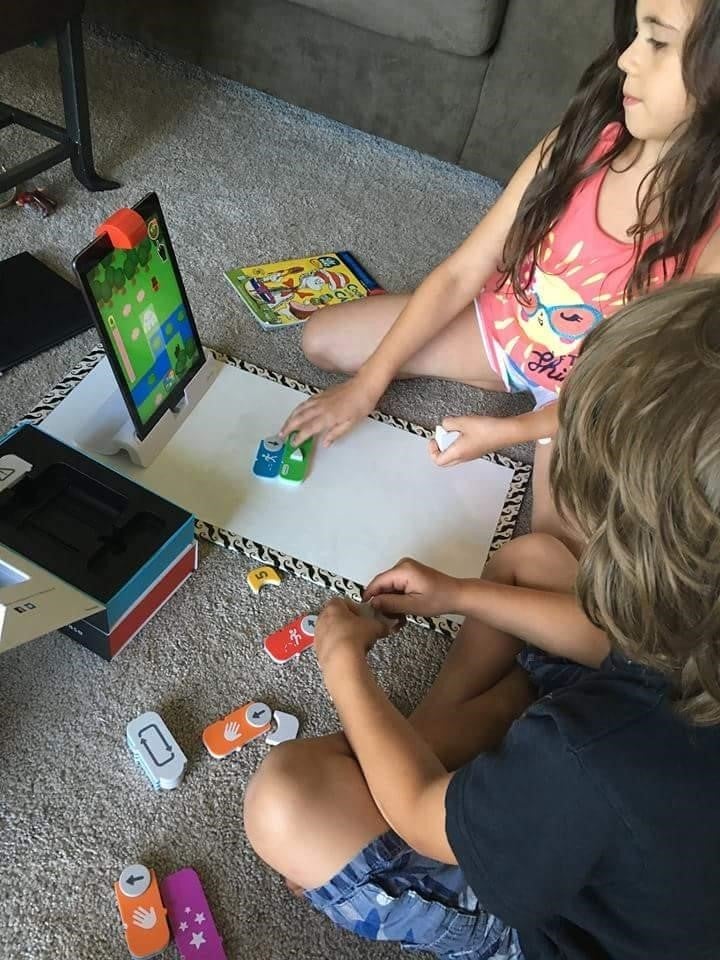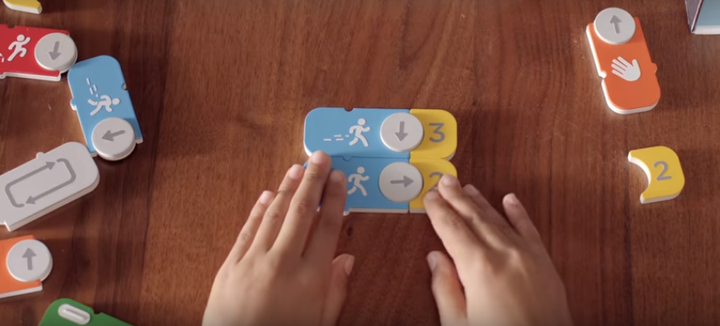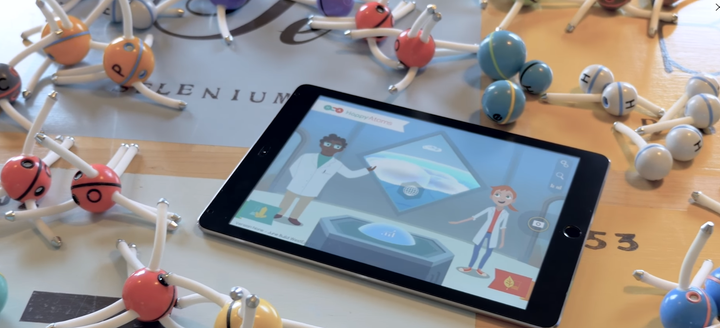Augmented Reality is pretty great. You layer information from the digital world on top of your real world to provide extra information and experiences. Examples? Point your phone at a historic place. Your phone recognizes the image or location or geographical coordinates and fetches some extra detail about that place. Point your device at a box of cereal and find out how many calories come included. PokémonGo has made us all a little “AR” crazy, letting us superimpose our pop-up Poké-characters on real world backgrounds.
Reverse augmented reality is just the opposite. Your real life actions get translated into your device. The emphasis is on what you do in the physical world. People underestimate the power of this reverse AR encounter, especially when it comes to kid’s learning.
Let me give you a few compelling examples.

Osmo is deceptively simple. It turns a simple reflective mirror- like accessory for the iPad into a magical platform for reverse augmented reality. Using the iPad’s own camera and the mirror-like attachment, Osmo takes the things kids do in the real world using their tactile sense. It sends that information onto the screen for additional processing. The $79.99 device enables all sorts of creative play making it in essence a learning platform for kids that like to touch the “real stuff” not the iPad.

In its latest two incarnations, Osmo Masterpiece and Osmo Coding you learn to draw or code respectively. With Coding you get simple puzzle-piece blocks labelled with icons to represent programming options like forward, jump and more. The results are sort of a cross between Pac-Man and the original Logo programming language, a routine that kids build to move around the screen in a game playing fashion. Delightful.

Masterpiece uses the same reflective mirror to let kids experiment with art. You can start with any photo on your tables, camera roll or from the web. The photo will appear on screen as a line drawing and you can place a piece of paper in front of the screen and essentially trace the photo. Since your hand actions are mimicked on screen you won’t make a mistake. I learned quite a bit about perspective drawing with this reverse bit of augmented reality. Plus, you can share your output with friends and family.

A new game for kids still available only on Indiegogo called Happy Atoms teaches chemistry with this reverse AR strategy. Kids build molecules using balls that stick together like building blocks. The atoms are built into molecular creations, shown to the tablet screen and then come to life on the screen, imparting additional information.
Other experiments about capturing the kid’s digital creation and augmenting them continue. KOSKI, available as a Kickstarter campaign, mixes wood block building with AR. But not so fast, these forays into reverse AR are all still experiments. Some will fail like Lego Fusion, a building kit using Legos that sprang to life on your screen once it was built is being discontinued.

Not to feel left out of the fun, adults can experience reverse augmented reality with the ingenious Lenovo Yoga tablet with a built in digitizer. You can write on plain paper placed on the tablets hinged surface and have your writing (or doodles) appear on screen.
I like the concept of reverse AR for kids because it’s tactile and we all know the screen can only go so far as a substitute for the tactile world. Let’s keep those great ideas coming.
Robin Raskin is founder of Living in Digital Times (LIDT), a team of technophiles who bring together top experts and the latest innovations that intersect lifestyle and technology. LIDT produces conferences and expos at CES and throughout the year focusing on how technology enhances every aspect of our lives through the eyes of today’s digital consumer
